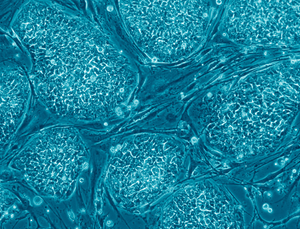Mesenchymal stem cells (abbreviated as MSCs from now on) are one the many different types of stem cells. Due to their multipotent nature (check the what are stem cells post for more info ) they are classified as adult stem cells.
MSCs are the stem cells responsible for creating all the cells found in the skeletal tissue. Some times the term “multipotent mesenchymal stromal cells” is used alternatively.
Who discovered them?
The discover of MSCs is considered to be Alexander Maximow who was the first to describe a cell in the bone marrow with the capacity to transform into skeletal cells.
What cells are derived from MSCs?
As mentioned before, skeletal cells are derived from mesenchymal stem cells. The cells forming the skeletal tissue are the following:
- Adipocytes, which are fat-forming cells
- Chondrocytes, cells forming all types of cartilage
- Myocytes, the main cells forming our muscles
- And finally osteoblasts, the bone-forming cells
The published literature also indicates that MSCs can be induced to create neurons, however it fails to show whether these neurons are functional or not.
Where can mesenchymal stem cells be extracted from?
Mesenchymal stem cells are mainly found inside the bone marrow tissue. Just as a side mention, in the bone marrow we can also find two other types of stem cells, endothelial stem cells and hematopoietic stem cells.
Except bone marrow, scientists can currently extract MSCs from fat tissue, muscle fibers and from the blood of umbilical cords.
Clinical Applications of MSCs
As of today there is no clinically approved treatment that involves the use of mesenchymal stem cells. However there are many studies already conducted or still running that indicate that mesenchymal stem cells may hold the key to one day treat a series of skeletal-tissue related conditions that today’s medicine has no answer to. There are even some clinical trials (which will be presented below) conducted on humans and involving mesenchymal stem cells
Possibly the greatest use for MSCs is in the treatment of arthritis-related conditions, including osteoarthritis and rheumatoid arthritis. Some indicating research examples are the following:
- A small human study by Wakitani were cartilage defects were successfully treated using mesenchymal stem cells
- A similar, again human, study by Centeno on the same issue (cartilage regeneration)
- Cartistem, a MSC program that is already approved in Korea, and currently on phase 2 human clinical trials in the USA. Cartistem is a product for treating cartilage defects.
Study’s on various animal models indicate that MSCs may have potential in the treatment of osteoporosis
Numerous studies on rodents suggest that mesenchymal stem cells may be a viable solution for treating Heart and blood vessel damages after a stroke or a heart attack. There is also a human clinical trial currently running (in the U.S.) for a product called SB623. Aim of the trial is to test the product’s efficacy and safety for damages like the ones described before
Finally a few studies suggest that mesenchymal stem cells may be useful for the treatment of various inflammatory diseases, for example the inflammatory bowel disease.
Source: This Mesenchymal stem cells page by Stem Cells Freak
Again, feel free to leave a comment if you have any questions. I will reply as soon as possible


